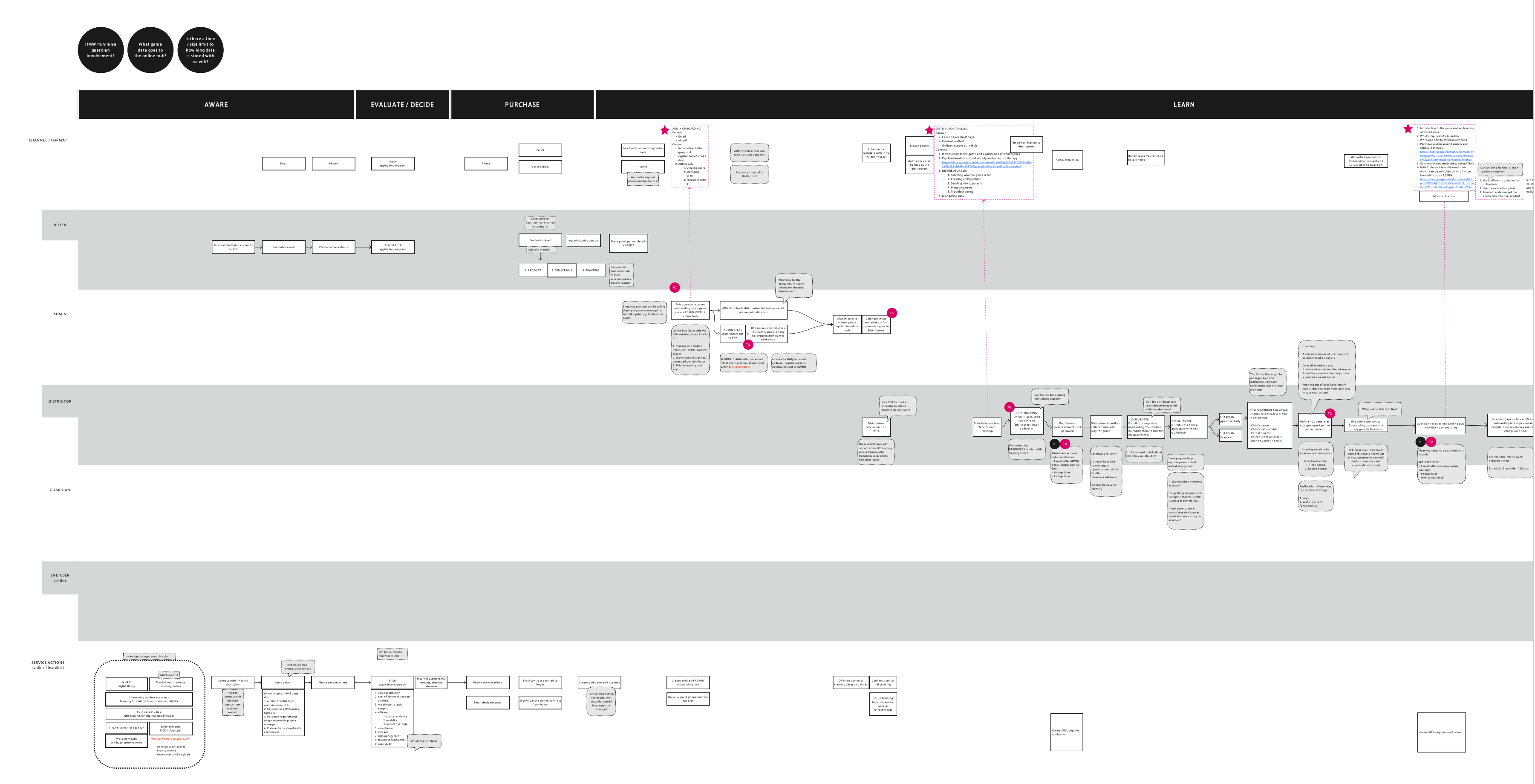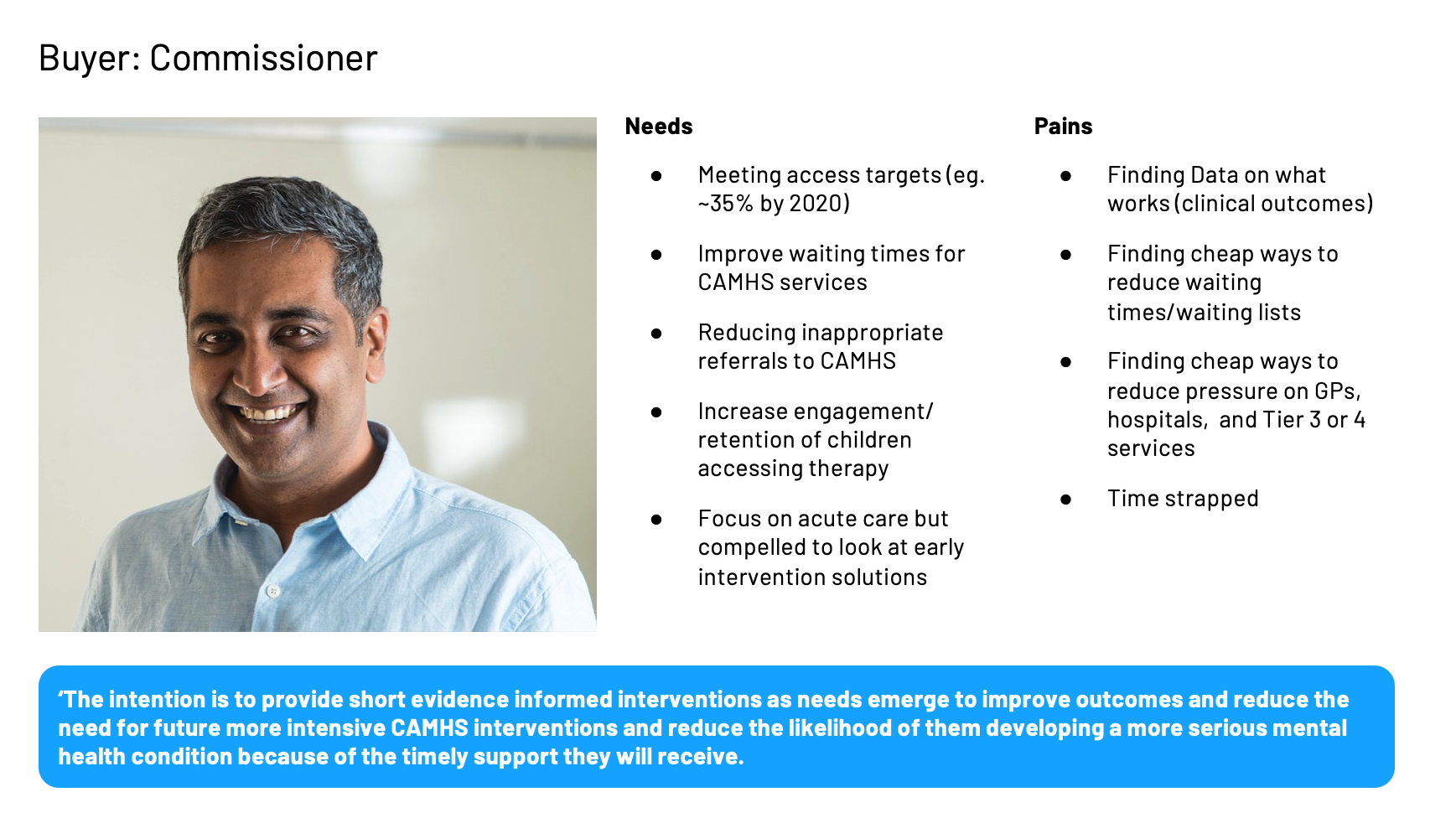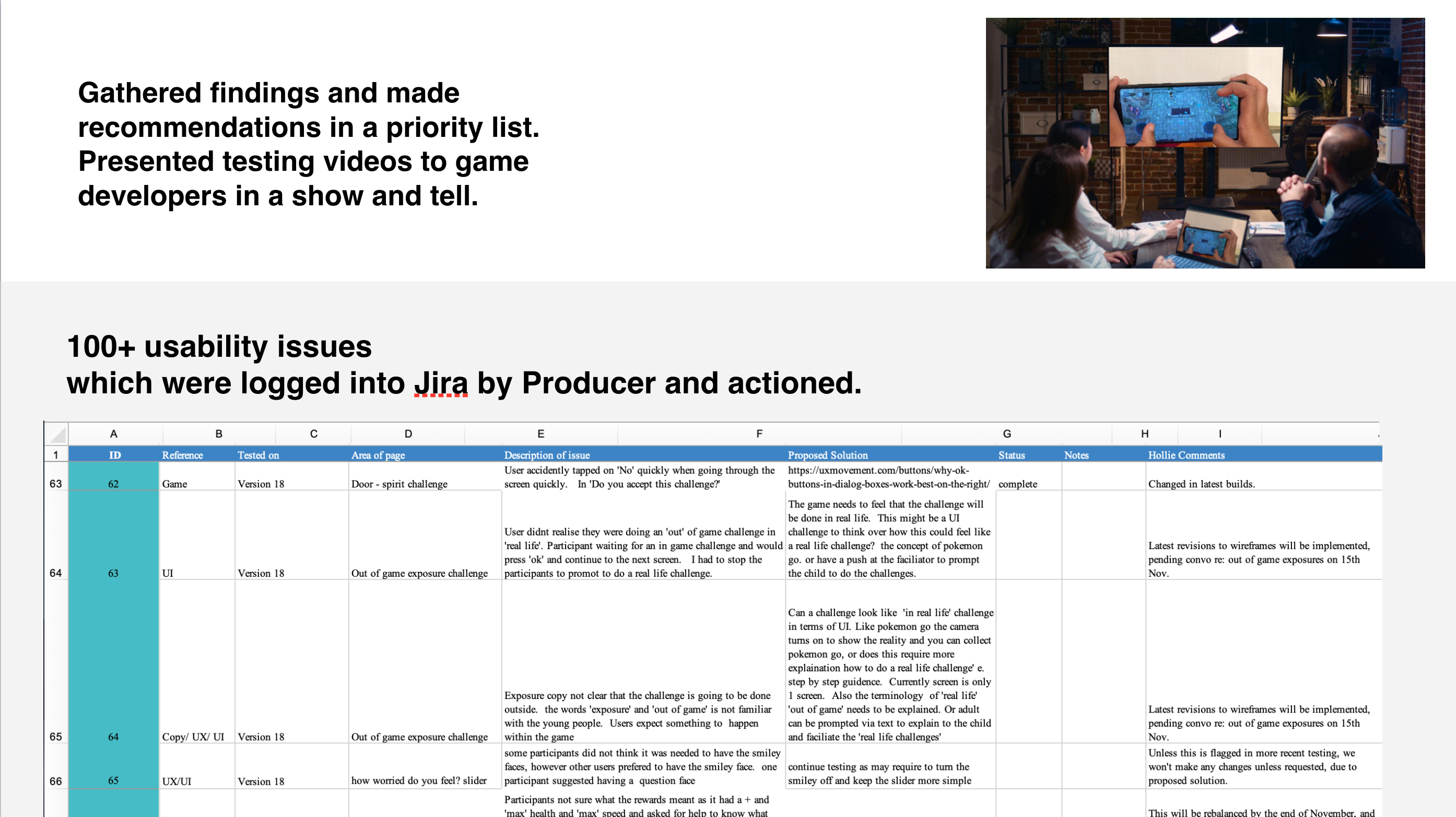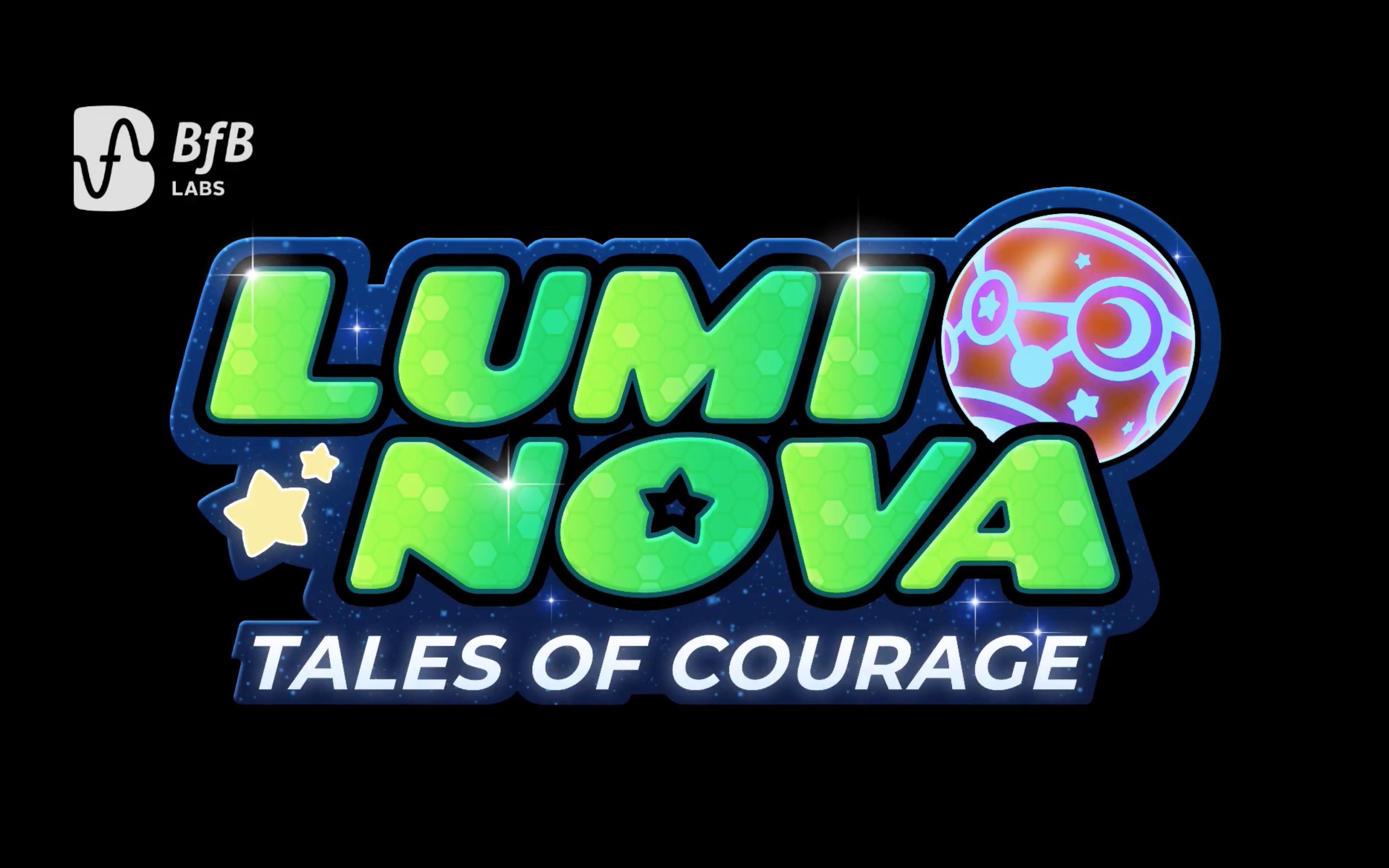Art Director
Clinical Content Lead
Service Designer
Year
2019
My Role
-
- Lead UX Designer
- Lead User Researcher
Disciplines
- User Experience
- Product Design
- Interactive design
- User Research
- Service Design
Digital game that helps support young people face and overcome their worries
Anxiety affects approximately 400,000 8-12 year olds in the UK. Anxiety has a huge impact on young people’s lives, preventing them from going to school, seeing friends, and participating in ‘normal’ activities, and causing depression, self-harm, and life-long negative effects into adulthood.
Working with BfB Labs, we used immersive gaming to develop a new anxiety management product – fun for young people to use, with high adherence, and an evidence base to support use alongside therapy.
The Process
What I did
Insights
Discovery Research
How might we help tackle anxiety in young people?
The proposed solution is to provide a low-cost digital intervention (game) that is clinically proven to provide early support to young people with low-medium levels of anxiety.
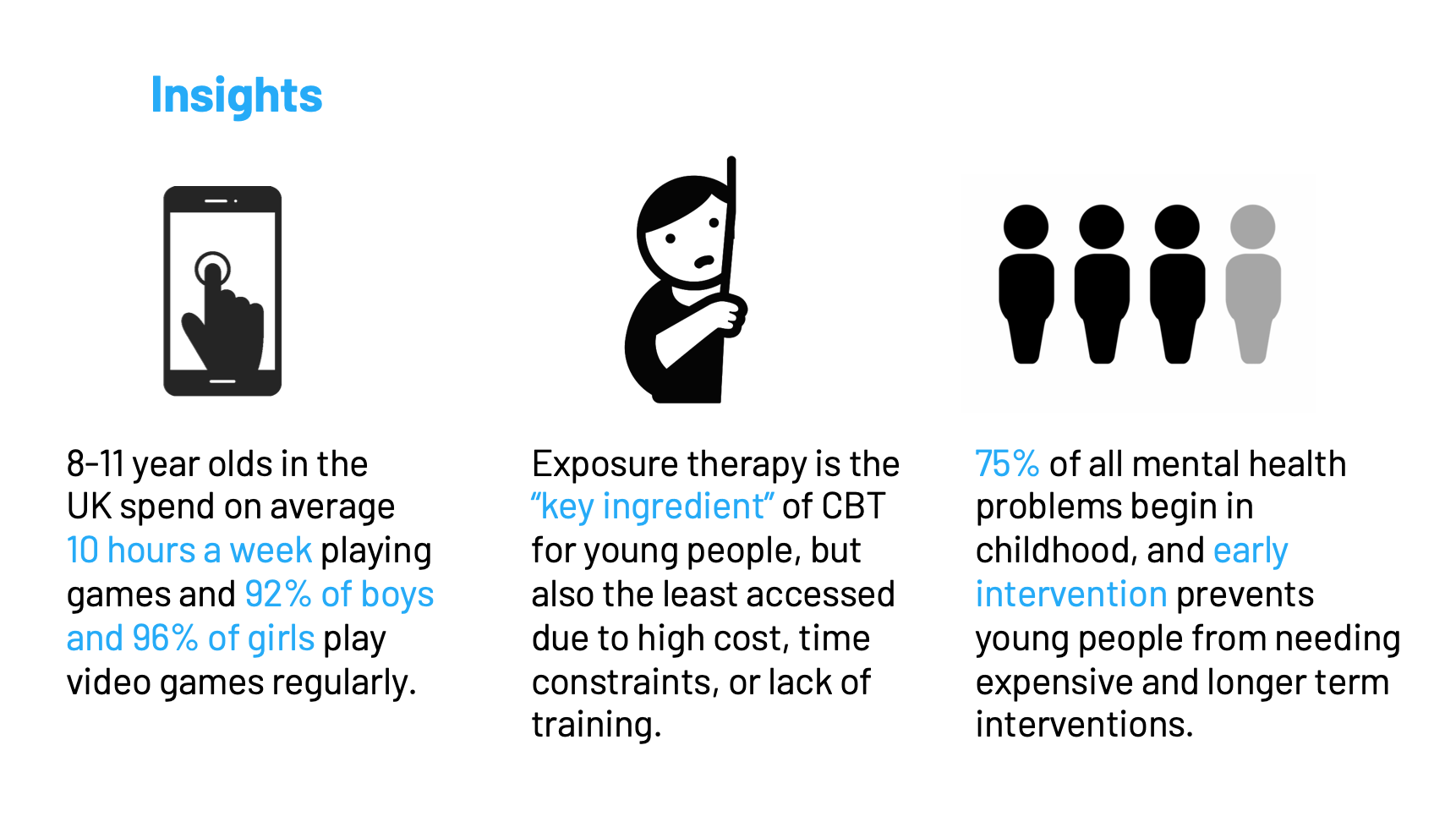
Co-design workshop
Ideas and sketches
Mapping the user journey as storyboards
I storyboarded each wireframe to include characters, story narrative and basic UI. Whilst working on the exposure therapy and the onboarding journeys, I had to sense check with the Clinical Content Lead to ensure the clinical content complied with Cognitive Behavioural Therapy. I also collaborated with the Games Designer to direct the game narrative, to ensure the clinical content would be easily understood by young people through storytelling.


Design & Prototype
I wireframed and prototyped responsive designs in Sketch, Invision, Figma, Principle and UXPin, depending on what interaction was needed to be tested. As well as paper prototypes for quick iterations.

Game interfaces

Character customisation
Non-binary character customisation to allow users to express themselves within the game.

360 exposures
Virtual reality environments to introduce them to exposures.

Emotional diary
Emotional states are tracked after each exposure challenge.
Revising the future service design map to fill in the gaps in the service and how it is delivered and operated
Although an initial service blueprint was created earlier in the project, it was not a fixed or final. The more I started prototyping features, iterates ideas and acted on research findings as I interviewed parents and SENCO staff, the more evolved the service was becoming. Some ideas become obsolete and new ideas were generated.
I supported the Innovation Lead to lead a workshop with the team in order to recreate a more refined service blueprint. The workshop helped the team reflect on changes and to share the vision for the future service.
Identifying facilitators and distributors of the game via service blueprint
The game required facilitators – a parent, carer, teacher, or therapist to help the young people to:
- Help choose fears, goals and ladders
- Help organise and oversee out-of-game exposures
- Verify whether out-of-game exposures have been done
The service blueprint also identified that there needed onboarding, psycho-education, and a support pack for facilitators, including ways to distribute the game to others through Schools and GP surgeries.
VitaMind Hub is the go-to place for professionals to provide mental health support for young people in an instant.
It is a secure online portal for professionals to manage users and track detailed in-intervention progress analytics in real-time.
-
For professionals (clinicians, school staff, wellbeing practitioners, youth workers etc.)

Regular cycles of testing during development to solve usability issues
I conducted usability tests at Primary Schools and homes. In 12 weeks, I tested the game and the clinical user flows with 45 young people and 15 parents across the UK – every 2 weeks.
I lead the usability tests and mentored work colleagues to conduct usability tests as we did not have enough support to have additional note takers. Due to classes taking place at schools, we only had a small set of time to do usability tests and sometimes we were required to tests with young people in pairs.
Outcomes
- Approved by the FDA as a medical device
- 80%v of young people during the clinical trails said they saw an improvement in their anxiety symptoms
- Won £1,063,514 in NHS funding
- Game built for iOS and Android with 5 star rating
- More young people with anxiety get support early
- Reduction in waiting lists and times for CAMHS services
- Value at all stages of the care pathway, helping to reduce costs of statutory care
- Secondary population health benefits of young people better able to cope with their anxieties (eg. better school attendance, participation etc.)
